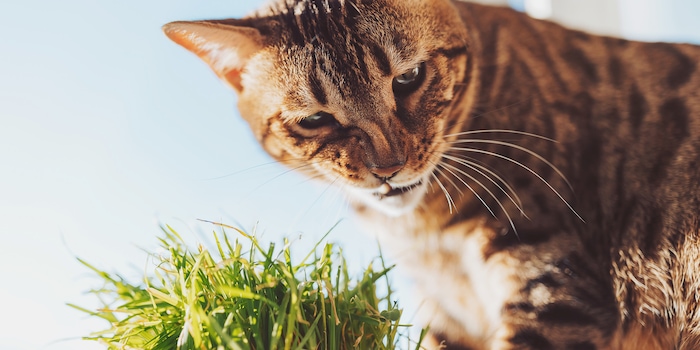
Why cats eat grass even though they vomit it up
Anyone who doesn't know cats well will wonder why they eat these plants if they don't like them. The answer lies in the structure of the greenery they eat.
Cats' behaviour sometimes puzzles more than just their owners - for example, why they regularly eat grass even though it obviously doesn't agree with them. The remains regurgitated shortly after consumption speak for themselves. It was regularly surmised that they wanted to get rid of spoilt food or indigestible leftovers. The study by Kara Bensel from High Point University and her team provides new evidence to confirm this hypothesis: Cats specifically seek out certain types of grass that might actually serve as stomach cleaners for them.
Bensel and her team analysed hairballs regurgitated by the cats of lead author Nicole Hughes, who owns two cats and has repeatedly collected and stored the regurgitated remains over the years: One day, an occasion would arise to examine them. The scientists involved cut the cat faeces into small pieces and coated the material with a layer of gold so that it could be scanned under an electron microscope.
The detailed images revealed not only that the plant remains are embedded in the hairballs, but also the structure of the grasses involved: the stalks had jagged and toothed edges as well as so-called trichomes, hair-like structures on their surfaces that penetrated the hair strands like the prongs of a fork. Depending on the plant, these microstructures were 2 to 20 times longer than the cat hairs were wide - they were just the right size to pick up the hairs like rakes pick up hay.
It is likely that the cats specifically eat grasses with corresponding microstructures in order to clean their stomachs of the hairs. These enter the internal organs via furry prey, for example, or are ingested when they lick their fur. However, the method is probably not suitable for getting rid of parasites: worms, for example, are significantly larger than the hair and therefore do not stick to the jagged stalks - so they are unfortunately not suitable for a worming treatment.
A genetic study of the plant material showed that it was typical garden grasses or houseplants such as the three-master flowers of the genus Tradescantia. They have a rough, but not too prickly surface.
Spectrum of Science
We are partners of Spektrum der Wissenschaft and would like to make well-founded information more accessible to you. Follow Spektrum der Wissenschaft if you like the articles.
Original article on Spektrum.de
Experts from science and research report on the latest findings in their fields – competent, authentic and comprehensible.
From the latest iPhone to the return of 80s fashion. The editorial team will help you make sense of it all.
Show all